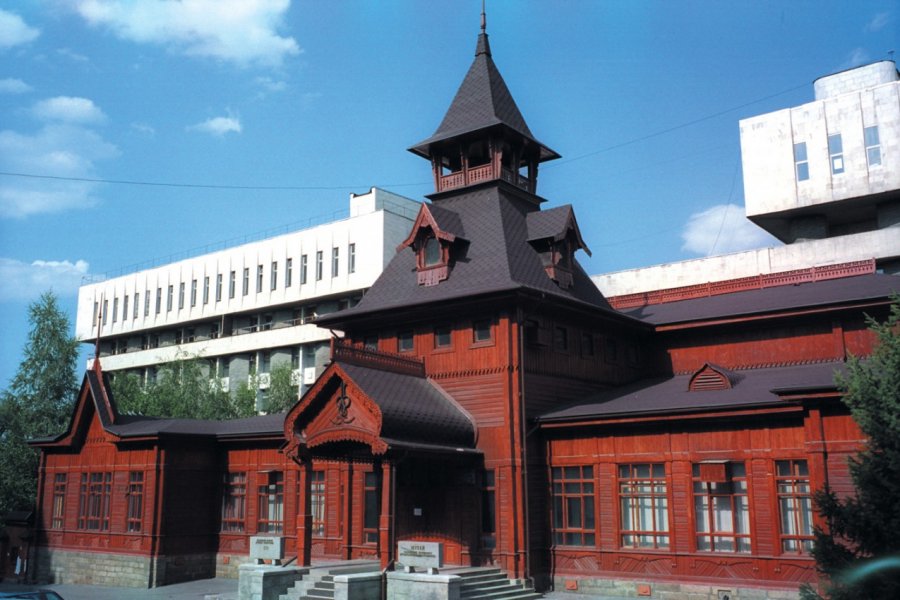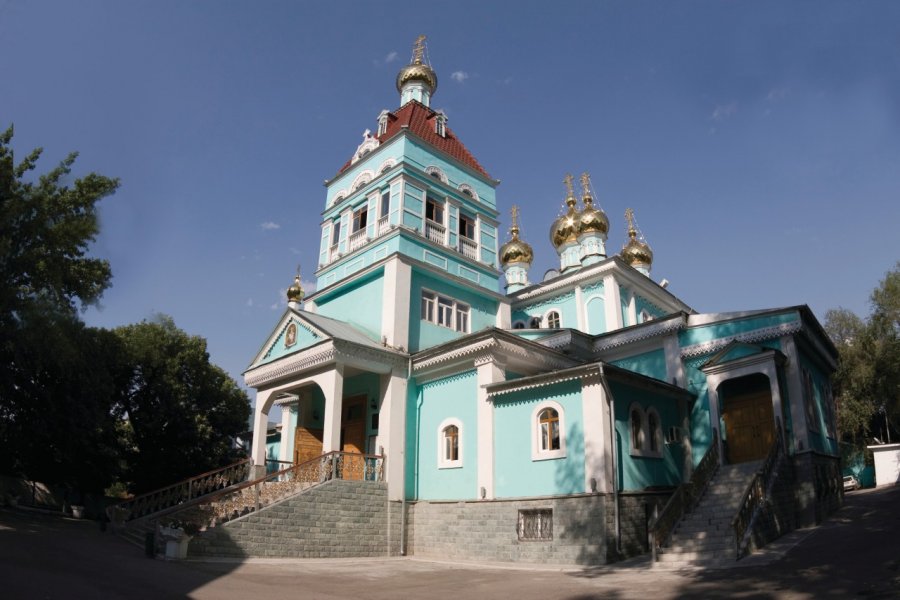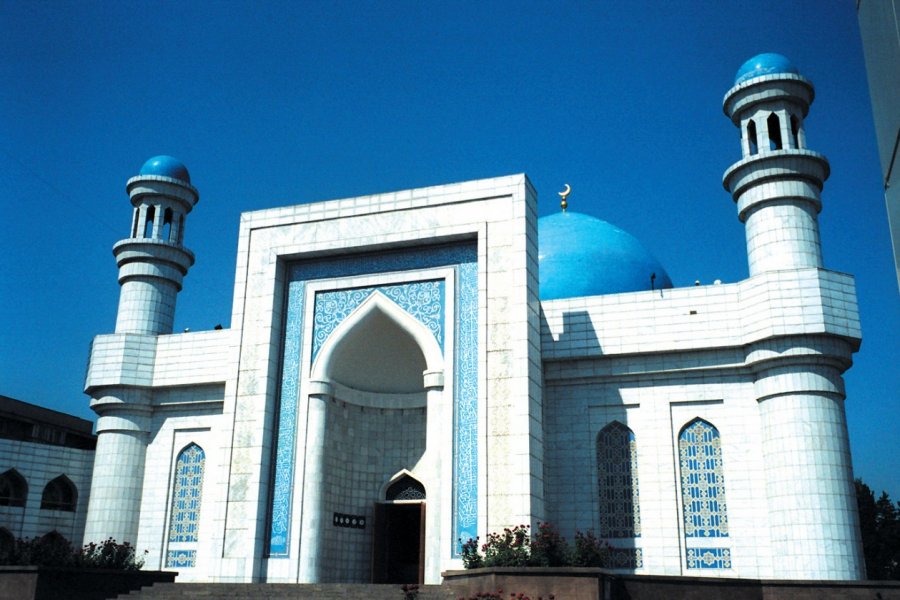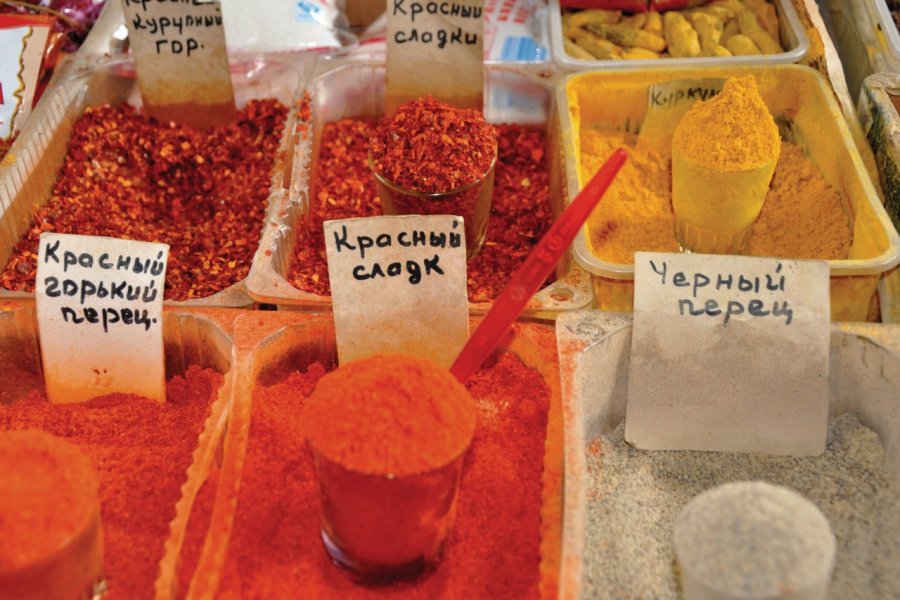Travel Guide Almaty
Find an accommodation
Advertising
Almaty, the capital of Kazakhstan under its Russian name of Alma-Ata, lost its status in 1997 when the country's capital was transferred 1,000 km further north to Astana. Recently, it has also lost its status as a regional capital to its neighbour Taldykorgan. However, until the new capital Astana is "fully operational", Almaty is still home to many administrations, universities and embassies, and will remain so for the most part until 2030, when Astana's urban development programme is expected to be completed. Almaty also continues to grow and develop its infrastructure, as evidenced by the inauguration of the metro, the second largest in Central Asia after Tashkent in December 2011.Although the "historic capital" does not in fact offer anything truly ancient in its architecture, it has preserved from its decades as the country's leading city a lively atmosphere, a certain comfort of life and tourist infrastructures, appreciable for those who have long wandered in the steppe or in the remote regions of the country. The opportunity to eat a rare steak or enjoy a tightly squeezed espresso, and to frequent authentic pubs! You will not be disappointed with your stay, even if you are stuck in Almaty waiting for visas. Its cultural life, with its many museums and theatres, is one of the city's main attractions. But you can also enjoy Almaty by strolling through the busy streets, lazing around in one of its many parks or on the terrace of a café on a pedestrian street. In the surrounding area, hiking, skiing and skating in winter are all additional reasons to stay in Almaty for a while.HistoryLocated in the extreme southwest of the country, Almaty, or Alma-Ata, was chosen as the capital of Kazakhstan by the Soviets in order to group together the decision-making (and possibly intervention) centres in the same geographical area. This is why Bishkek in Kyrgyzstan and Tashkent in Uzbekistan were chosen, as were Almaty, although far from the geographical centre of their respective countries. It was this remoteness that led President Nazarbayev, very soon after independence, to move the capital northward, further into the centre of the country, and closer to the Russian communities, which were in the clear majority in the north of the country and which, too far from the capital, could have been tempted by secession.Located in the northern foothills of the Tian Shan, at an altitude of less than 1,000 m, Almaty enjoys a continental climate, marked throughout the year by heavy rainfall and extreme temperatures in both summer and winter.The first town founded on this site in 1854 was a Russian garrison town, called Verny, a name it retained until 1921. In 1929, with the creation of the Soviet Socialist Republic of Kazakhstan, the former Verny became the capital of Kazakhstan, under the name of Alma-Ata.The abundance of burial mounds containing Sakas (or Scythians) tombs nevertheless proves that the region was inhabited and cultivated many centuries before the arrival of the Russians. It is from one of these tumuli that the famous Golden Man comes from, an armor entirely covered with gold, a copy of which is on display in the Almaty Museum. In the Middle Ages, Almaty developed and, like all the other major cities in Central Asia, received the juicy benefits of being located along the Silk Road. And like the whole region, Almaty is experiencing a rapid economic decline due to the rise of sailing and the development of sea routes at the expense of long caravans.In 1854, Verny's foundation changed the fate of the region, which was now under strong Russian influence. Around the fort, a large city grew and spread, which was almost entirely destroyed some thirty years later by the gigantic earthquake of 1887, then again by another earthquake in 1911.In 1921, Verny became Alma-Ata and a stop on the railway line linking Central Asia to Moscow. A crucial development phase, which will automatically place Alma-Ata as the ideal capital of Kazakhstan's SSR.Its development accelerated from the early 1930s, thanks to the new direct rail link with Siberia, to the Second World War, when Russia relocated a large part of its industrial activities to the city. The population grew rapidly during this period, partly due to the influx of refugees and Koreans and Slavs exiled by Stalin to the borders of the Soviet Empire.After the war, the city still expanded and had more than a million inhabitants. The centre is equipped with wide checkered avenues, punctuated by numerous parks and gardens. The city of Alma-Ata made history in 1991 by hosting the meeting of Central Asian countries during which the death of the USSR and the birth of the CIS were proclaimed. It was only after independence, in 1993, that Alma-Ata became Almaty, or "rich in apples", in homage to the countless orchards of the region. Almaty will therefore have been capital under this name for only five short years. It has lost its status as a capital, but retains a special regime and, like Astana, benefits from an urban development plan that will be completed in 2030 and aims to make Almaty a "garden city", where greenery will theoretically have taken over the still very present Soviet grey.Although it has lost its role as a political capital, the city has retained its cosmopolitan character and still appears today as one of the most dynamic cities in Central Asia. The loss of capital status has not curbed the city's cultural and economic ambitions, quite the contrary. The inhabitants of Almaty are having a hard time leaving the city for Astana. Bars and restaurants appear every day in the most pleasant districts of the city, while the festive and cultural news is always richer. Recently, however, Almaty was very disappointed to see its bid for the 2022 Olympic Winter Games rejected by the IOC in favour of Beijing. But the city remains a candidate for 2026, and until then the modern facilities of the Shymbulak complex will delight the Almaty people.
What to visit Almaty?
Advertising
Weather at the moment
Advertising
Organize your trip with our partners Almaty
Transportation
Book your plane tickets
Car Rental
Boat rental
Accommodation & stays
Find a hotel
Holiday rental
Find your campsite
Tailor-made trip
Immersion travel
Services / On site
Activities & visits
Find a doctor
Almaty travel inspiration
Find unique Stay Offers with our Partners
Pictures and images Almaty
Other destinations nearby Almaty
100 km away















